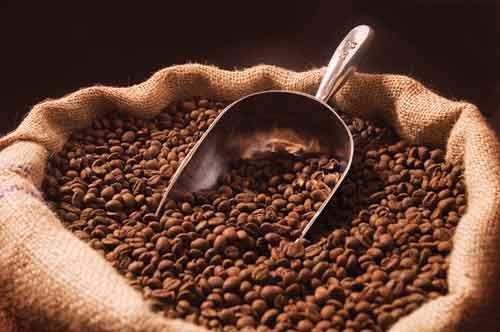Introduction to the characteristics of Costa Rican Coffee Flavor Manor
1502 C. Columbus discovered the Costa Rican coast on his fourth voyage. Since then, Spanish settlers have invaded many times.
Cartago City was built in 1563, Costa Rica became a Spanish colony and was placed under the jurisdiction of the Governor General of Guatemala. During colonial rule, under the cruel slavery and oppression of Spanish colonists, the Indians were almost wiped out, and there was very little labor available for slavery. The Spanish had to cultivate their own small plots of land and produce their own agricultural products. Costa Rica had long been poor, ignorant and isolated. In the 1948 general election, J. M. H. Figueres Ferrer, the leader of the Social Democratic Party, launched a civil war, seized power, set up a ruling council (see Costa Rica Civil War), and the People's Pioneer Party was declared illegal.
In 1949 Figueres Ferrer handed over power to the elected leader of the National League, O. Urat Blanco.
In October 1951, Figueres Ferrer founded the National Liberation Party.
Of the six general elections held between 1953 and 1978, the National Liberation Party won four. During the party's administration, it emphasized state intervention in the economy, nationalized some industries, raised import taxes to protect national industries, forced the United Fruit Company to increase income taxes; strengthened relations with other Latin American countries and Western Europe, changed its dependence on the United States alone, joined the Central American Common Market in 1963, and established diplomatic relations with the Soviet Union and some countries in Eastern Europe in the 1970s.
In 1978, R. Carazo Odio, leader of the Solidarity Party, was elected president. In order to ease domestic contradictions, he adopted measures such as austerity spending and increased social welfare, while proposing to restrict state capital and encourage foreign and private investment.
In February 1982, L.A. Monge Alvarez, leader of the National Liberation Party, was elected president.
In February 2010, Chinchilla won the election and became the first female president in Costa Rica's history. Costa Rica's climate conditions are completely different, completely overturning the classification of the four seasons of the year. There are only two seasons here. April to December is the rainy season, with much rainfall. From the end of December to April of the following year is the dry season, also known as summer. The annual average temperature in San Jose, the capital, ranges from 15 ° C to 26 ° C; temperatures in coastal areas are relatively high, with an average of 21 ° C at night and 30 ° C at day in the Caribbean.
Coffee is an important source of income for Costa Rica, introduced in 1808 and cultivated for 200 years. Costa Rica has a third of the population invested
Costa Ricans say coffee has changed the country, and has contributed significantly to creating a rich environment. Although Costa Rica is the third largest country in Central America, it has a better economic environment than half the other countries. Because of its rich population and stable society, Costa Rica has more than 30 national parks, with rich coffee grains, ideal acidity and unique aroma. Costa Rica's coffee industry, formerly controlled by the Instituto del Café de Costa Rica (ICAFE), has been taken over by the Official Coffee Council (Oficin del Café). Among coffee exports, those deemed substandard are colored with blue vegetable dye before being recycled for domestic sale. Coffee consumed domestically (dyed blue or undyed) accounts for about 10% of the total production. The local per capita coffee consumption is twice that of Italy or the United States. Other types of Brazilian coffee, such as Rio and Parana, can be produced in large quantities without much care. Although they taste rough, they are a good and inexpensive coffee. Because they are distributed all over the country, their solid quality varies and they have their own standards.(NO.2~NO.8 according to the amount of impurities, NO.13~NO.19 according to the size of beans, divided into six grades according to taste). Almost all Arabica varieties are of good quality and stable prices, the most famous being Costa Rica, which has been a necessity for blended coffee since ancient times and is familiar to the public.
Excellent Costa Rican coffee is known as "extra hard beans" and can grow at altitudes above 1500 meters. Altitude has always been a problem for coffee growers. The higher the altitude, the better the beans, not only because higher altitudes increase the acidity of the beans and thus enhance the flavor, but also because the lower night temperatures at higher altitudes can slow down the growth of trees and thus enhance the flavor of the beans. In addition, due to the high altitude drop caused by sufficient rainfall, coffee tree growth is very favorable

Important Notice :
前街咖啡 FrontStreet Coffee has moved to new addredd:
FrontStreet Coffee Address: 315,Donghua East Road,GuangZhou
Tel:020 38364473
- Prev

Fresh and elegant, full particles, excellent acidity, pleasant aroma of Dominican coffee flavor, special
The earliest coffee in Dominica was introduced from Martinique (French overseas department), dating back to the early 18th century. Dominica is an island country with a tropical climate. The temperature changes little throughout the year. Except for the middle Cordillera mountain area, where the temperature is lower than 0℃ in winter, the average annual temperature in other areas is between 25 and 30℃, which is affected by the terrain of the mountains.
- Next

The characteristics of Jamaican coffee
When it comes to Jamaica, everyone's eyes lit up immediately because it produced the best Jamaican Blue Mountain Coffee (Jamaica Blue Mountain) in the world. We absolutely believe that Jamaica Blue Mountain Coffee is the best coffee, its acid, sugar, alcohol and bitterness are well balanced, fragrant and smooth to drink, but its price is too high, although it is worth a try, there is no need to do so.
Related
- Detailed explanation of Jadeite planting Land in Panamanian Jadeite Manor introduction to the grading system of Jadeite competitive bidding, Red bid, Green bid and Rose Summer
- Story of Coffee planting in Brenka region of Costa Rica Stonehenge Manor anaerobic heavy honey treatment of flavor mouth
- What's on the barrel of Blue Mountain Coffee beans?
- Can American coffee also pull flowers? How to use hot American style to pull out a good-looking pattern?
- Can you make a cold extract with coffee beans? What is the right proportion for cold-extracted coffee formula?
- Indonesian PWN Gold Mandrine Coffee Origin Features Flavor How to Chong? Mandolin coffee is American.
- A brief introduction to the flavor characteristics of Brazilian yellow bourbon coffee beans
- What is the effect of different water quality on the flavor of cold-extracted coffee? What kind of water is best for brewing coffee?
- Why do you think of Rose Summer whenever you mention Panamanian coffee?
- Introduction to the characteristics of authentic blue mountain coffee bean producing areas? What is the CIB Coffee Authority in Jamaica?

